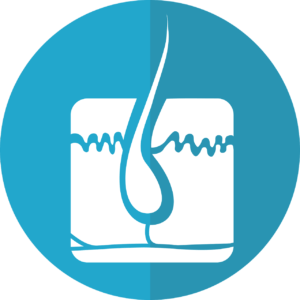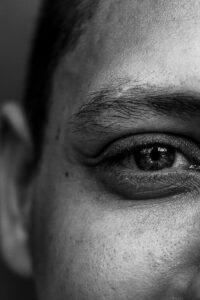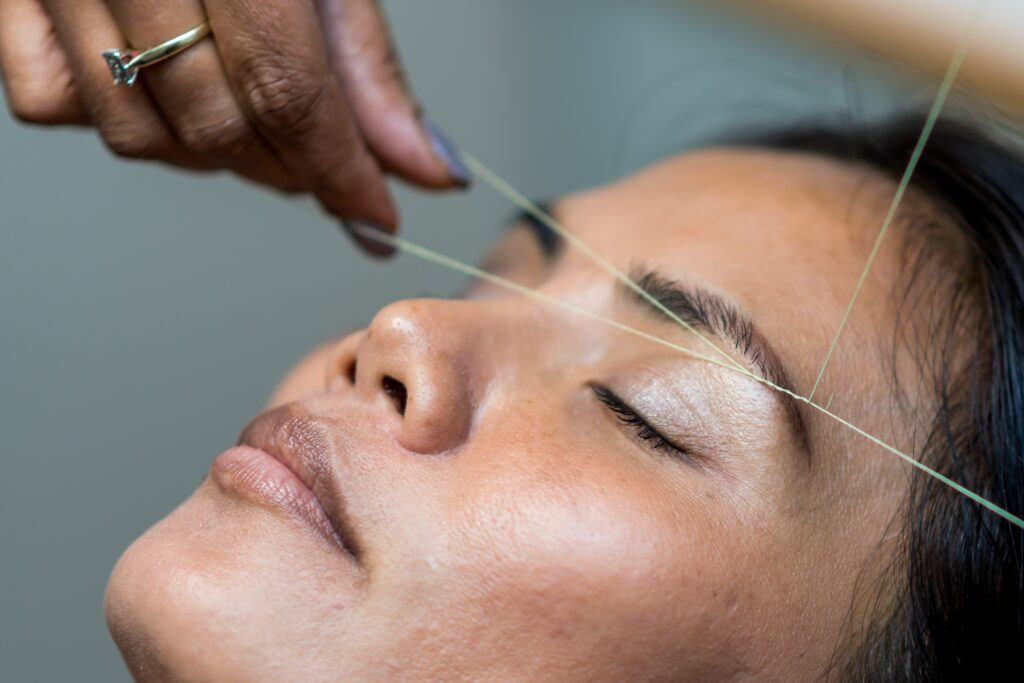
“What Are the stages of Hair Growth? | Cycle.” is an introduction of the hair growth cycle: Anagen, Catagen, and Telogen.
Many things in life take place in a cyclical manner. Hair growth is one of them. It has a beginning, middle, and end stage. There are three main cycles from the moment a shaft of hair is born to when it dies.
The texture, where on the body the hair is, and genetics are the most common factors determining how long it takes to grow. For example, fine, shallow hair (vellus) covering most of the body will not have a typical cycle.
Eyebrows and eyelashes do not continue to grow indefinitely. Scalp hairs and men’s beards tend to grow the longest and on a continuous basis.

So, what are the stages of hair growth? Here they are …
Hair Phase, Anagen: First Things First
In the beginning, was …
… a hair follicle. In this sac-like vacuum, hair germinates by way of an organized structure. This includes the bulge, connective tissue sheath, inner and outer root sheaths, matrix, bulb, and dermal papilla in the lower layer of the skin.
Capillaries, tiny blood vessels, are found in the papilla and nourish the cells as they form the hair shaft. The matrix is responsible for the activities which result in the birth and growth of hair.
Hair in this phase lasts between two and eight years actively growing. There is a short active phase when hair growth is slow versus a long active phase when hair grows rapidly.
While genetics is one factor that determines growth rate, there are two active phases … short and long. Examples in the short active phase are eyebrows, eyelashes, arms, and legs. Scalp hair is an example in the long active phase.

Hair in each follicle grows at different stages and do not all fall out at the same time. In the anagen phase, approximately 90 percent of hair is present at any given time.
Hair growth may be further stimulated when there are hormonal imbalances usually causing irregularities. This may result in hirsutism, superfluous hair growth.
Catagen: It Pushes Through
Having seen the light of day …
… the hair detaches from its main source of sustenance. At this point, it has reached or is approaching its maximum growth while still being nourished by the follicle walls. After its detachment, it continues to push through the surface of the skin.
This is a very short phase lasting between one and four weeks with about 2 to 3 percent at any given time. They can easily be pulled out during combing and brushing.
The end forms a club hair which is dry and brittle. It can be found in the upper part of the hair follicle. This is because the follicle shrinks after its degeneration and moves upwards.
Sometimes another hair begins the anagen phase after a new follicle is regenerated in the lower section. In this case, two shafts will be present in the same follicle.
Telogen: Oops! It Dies.
Once upon a time …
… there was a natural source of nourishment. As it dies, each shaft of hair is totally free from its anchored origin in the dermis. The shriveled follicle goes through a period of rest … telogen. This lasts from one to three months or even longer.
At any given time, 8 to 10 percent of hair in this phase will be present. The hair will fall out by itself or comes out during combing or brushing.
Once the hair follicle has regenerated, a new hair forms in the anagen stage. If the old hair has not shed, two hairs will also be seen in the same follicle.
Cut Off, Uprooted, or Destroyed
You want it gone …
… but how? Hair isn’t always welcome by everyone. Some people will not even tolerate fine vellus hair on the body. They resort to a method of hair removal that suits them.
Sometimes hair is troublesome due to hormone imbalance or other reasons. As mentioned above, hirsutism may result. At other times, the decision to get rid of hair is just a matter of personal preference.
Cut Off by Shaving: The portion of hair that is visible above the surface of the skin is cut off horizontally. This emerges in a short period of time, a day or two, and the process has to be repeated.
Uprooted by Tweezing or Waxing: These methods forcibly pull the hairs out from the base of the hair follicle, unless they are already loosened during the second or third phase of the cycle.
Destroyed by Chemical Reaction or Electricity: Laser Hair Removal and Electrolysis are methods used to destroy hair in the follicle. The effectiveness of the treatment will determine permanent reduction, removal or regrowth.

A Hair is Born, Then Dies
So here’s the thing: A shaft of hair is born, it pushes through, then it dies. That is the cycle in the life of a hair … shaft by shaft. It would not be logical for all the hairs to go through each cycle at the same time.
The three cycles, Anagen, Catagen, and Telogen take place in the hair follicle in the dermis. The cycles tend to follow each other; however, sometimes another anagen phase will begin while a club hair is yet to be shed.
Hair growth is natural; however, some people do not like to have hair on different parts of their bodies. This may be due to hair growth abnormalities or personal preference.
We looked at five main methods of removing hair … shaving, tweezing, waxing, electrolysis, and laser. Other articles on this site go into more details about hair removal methods.
I hope this short article, “What Are the Stages of Hair Growth | Cycle. ” has helped you in some way.
There is a vast amount of information on the subject and related matter. This is just an introduction especially for those who are at a loss and need to be pointed in the right direction.
Feel free to leave your questions and comments below. I will do my best to address them.
… The End …